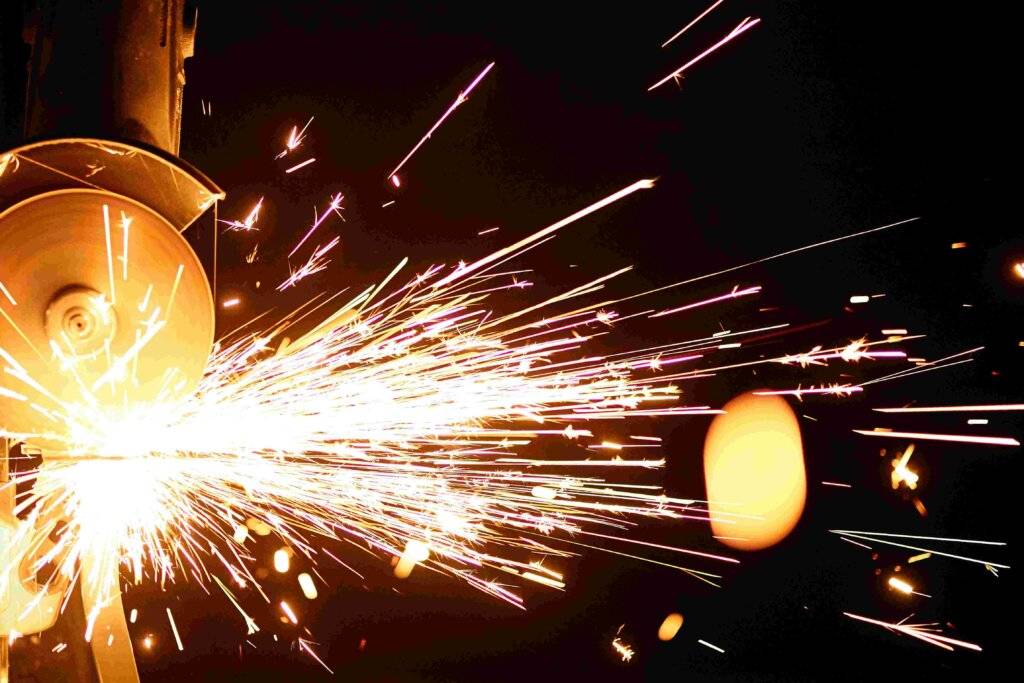Blade guard is an essential tool for every mechanic. When using an angle grinder, safety should always be your top priority. One crucial feature that significantly enhances user safety is the blade guard. While this may seem like a simple attachment, its role is essential in preventing accidents and ensuring optimal performance during cutting or grinding tasks. In this blog post, we’ll explore the importance of the blade guard and how it can improve both the safety and efficiency of your angle grinder operations.
What is a Blade Guard?
A blade guard, also known as a safety guard, is a protective cover placed over the cutting or grinding disc of an angle grinder. It serves two primary purposes: protecting the user from flying debris and controlling sparks. Made from durable materials such as metal or heavy-duty plastic, the blade guard helps ensure that the grinding disc is enclosed, leaving only the working edge exposed.
Why You Should Never Use an Angle Grinder Without a Blade Guard

Many professionals and DIY enthusiasts sometimes remove the blade guard to get better access to tight spots or to achieve a more precise cut. However, this can be incredibly dangerous. Without the blade guard, you’re at risk of injury from high-speed debris or even from the grinding wheel itself if it shatters or kicks back. Here are some reasons why using a blade guard is vital:
Prevents Debris and Sparks from Reaching the User

The guard directs most of the dust, sparks, and fragments away from you, reducing the chances of accidents and injuries. This feature is especially important when working with materials like metal and masonry, which produce a lot of debris.
Minimizes the Risk of Grinder Kickback
Grinder kickback is one of the most common causes of accidents with angle grinders. The blade guard adds a layer of protection between the spinning disc and the user in case the grinder stalls or kicks back.
Compliance with Safety Standards
Many workplace safety regulations and tool manufacturers strongly recommend or require the use of a blade guard. Skipping this component not only risks injury but may also void warranties and violate safety codes.
Choosing the Right Blade Guard for Your Angle Grinder
Not all blade guards are created equal, and different tasks may require different types of guards. Here are some factors to consider when selecting a blade guard:
Size Compatibility
Make sure the guard is the right size for your disc grinder. Most angle grinders come with standard disc sizes (4.5″, 5″, or 7″), and the guard should match this size.
Adjustable Blade Guard

Some blade guards are adjustable, allowing you to angle them in a way that directs debris away from sensitive areas. This flexibility can be useful when cutting at different angles or in confined spaces.
Material and Durability
High-quality blade guards made from sturdy materials will last longer and provide better protection. Metal guards are generally more durable than plastic ones and are better suited for heavy-duty grinding.
Maintenance Tips for Blade Guards
Keeping your blade guard in good condition is just as important as using it. Here are some maintenance tips to ensure its longevity:
Regular Cleaning: Clean the blade guard after every use to remove dust, debris, and any materials that may have accumulated.
Inspect for Damage: Before starting any project, check for cracks, bends, or other signs of wear that could compromise the guard’s ability to protect you.
Replacement: If the blade guard shows signs of excessive wear or damage, replace it immediately to maintain maximum safety.
Blade Guard Models and Their Use
Blade guards are essential safety components for angle grinders. They protect the user from accidental contact with the spinning grinding disc, which can cause severe injuries. Different blade guard models offer varying levels of protection and adjustability.
Common Blade Guard Models
Fixed Blade Guard:
Features: Permanently attached to the grinder and offers a basic level of protection.
Use: Suitable for general-purpose grinding tasks where the disc is not frequently changed.
Adjustable Blade Guard:
Features: Can be adjusted to accommodate different disc sizes and angles.
Use: Ideal for tasks that require frequent disc changes or when working in confined spaces.
Quick-Release Blade Guard:
Features: Allows for rapid removal and replacement of the disc.
Use: Suitable for applications that demand frequent disc changes, such as cutting or grinding metal.
Hood-Style Blade Guard:
Features: Offers a larger protective area, covering both sides of the disc.
Use: Ideal for tasks that involve cutting or grinding large workpieces.
Proper Use of Blade Guards

Always Use a Blade Guard: Never operate an angle grinder without a blade guard in place.
Adjust the Blade Guard Correctly: Ensure the blade guard is adjusted to provide maximum protection while allowing for visibility of the grinding disc.
Inspect the Blade Guard Regularly: Check for any damage or wear and replace it if necessary.
Choose the Right Blade Guard: Select a blade guard that is appropriate for the specific task and type of grinding disc.
Remember: The blade guard is a crucial safety feature. By using it correctly and maintaining it in good condition, you can significantly reduce the risk of accidents and injuries when using an angle grinder.
Final Thoughts
Using a blade guard with your angle grinder is not optional—it’s essential for both safety and performance. Whether you’re working on metal cutting, masonry grinding, or sanding, the blade guard should always be in place. Choosing the right size, material, and adjustable options can make a big difference in your tool’s efficiency and your own safety. Don’t compromise; make sure your angle grinder is always equipped with a durable and properly installed blade guard.
By following these guidelines, you not only protect yourself but also improve the overall effectiveness and lifespan of your tools. Always keep safety first, and let the blade guard do its job.


